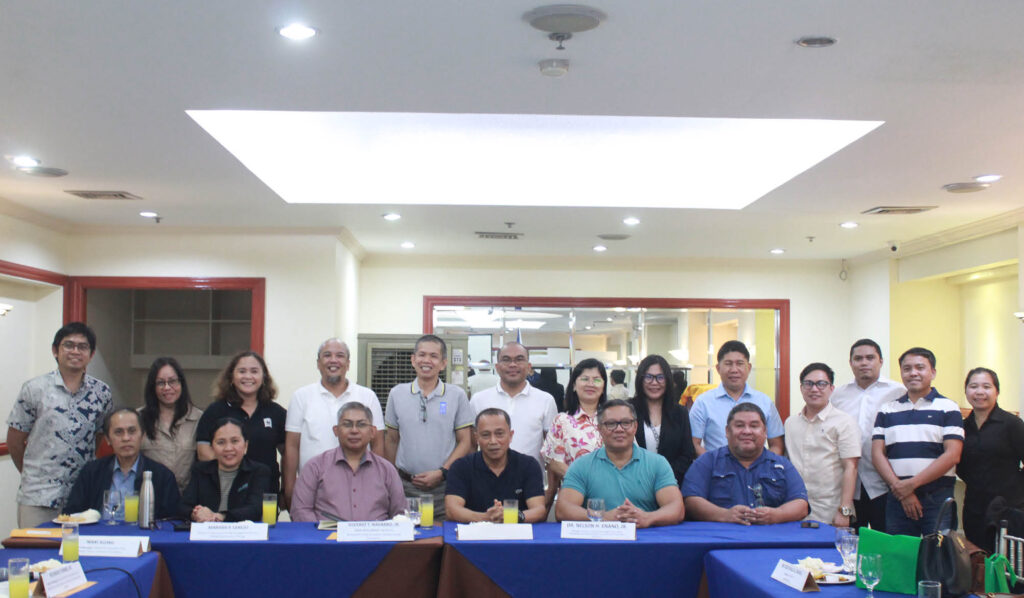
Policy Review Presentation on Energy Policy and Penalty Enforcement: A Multi-Sectoral Approach
In an intensive Policy Review Presentation by the Mindanao REACH Policy Consultant Engr. Silverio Navarro presented the critical points surrounding energy policy, the role of local government units (LGUs), and the importance of a multi-sectoral approach in Mindanao’s renewable energy (RE) landscape were discussed. The conference, featuring key government and community leaders, centered on the imperative for policy refinement, accountability in renewable energy targets, and the urgent need for sustainable electrification in rural and disadvantaged communities.
Regulatory Frameworks and Penalty Provisions
Director Cerezo highlighted the Department of Energy’s (DOE) focus on developing clear regulatory frameworks to support localities in meeting RE goals. He announced that draft regulations are now accessible online, allowing stakeholders to provide input. Moreover, Cerezo outlined that regulatory infractions could lead to administrative cases, with the DOE responsible for handling such cases.
The DOE is extending its reach by offering technical assistance to LGUs, as Bency emphasized, including assessments to enhance local RE initiatives. This provision aims to empower LGUs with the resources needed to meet national RE targets effectively.
Mindanao’s Contribution to National RE Goals
During the presentation, the pressing question of Mindanao’s contribution to the national 35% RE target was raised. GM Daymiel of the Electric Cooperatives (ECs) noted that Mindanao’s unique energy grid configuration, predominantly contracted with renewable sources, positions it to potentially lead in achieving the DOE’s objectives. The GM confirmed that current data on compliance levels across Mindanao’s ECs is available and would soon be validated to determine each locality’s specific contribution toward the 35% goal. However, hurdles like fill-in tariffs, which create funding constraints, were highlighted as areas where DOE intervention could be beneficial.
Re-strategizing Energy Partnerships Between LGUs and ECs
The discussion also underscored the need for more collaborative frameworks between LGUs and ECs. Both Cerezo and GM Saniel highlighted the importance of aligning these entities under a counterparting scheme, using ZAMSURECO’s model as a reference, where LGUs contribute labor and materials to shared RE projects. This model demonstrates a proactive approach to address logistical and financial challenges, especially in rural settings.
However, operational issues persist, such as maintenance challenges and security threats for solar home systems, particularly in remote areas. Reports of theft and lack of technical expertise for system upkeep underscore the urgent need for training and community involvement to foster sustainable usage of these systems.
Addressing the Energy Divide: Urban-Rural Disparities
Jun Jabla, an energy advocate, raised concerns about the energy divide that still plagues rural Mindanao. With an estimated 1.5 million households in the region remaining without electricity in 2018, recent progress has only halved that number, leaving many communities without access to power. Jabla advocated for the DOE to explore alternative funding sources, including Mindanao’s ₱200 billion environment fund, to close this gap.
The forum underscored the challenge of policy support versus technical or financial assistance, as reiterated by Cerezo. He clarified that the DOE primarily serves as a policy-making body, with financial resources sourced from partnerships like the DREAMS project. Community leaders, however, emphasized the necessity for DOE-grounded initiatives that respond directly to grassroots needs.
Rural Electrification and Socioeconomic Development
GM Saniel, representing the ECs, noted that despite increased infrastructure for rural electrification, a large portion of households remain disconnected due to high costs, particularly in marginalized areas. He stressed the importance of addressing this socioeconomic divide, where affordable household connections could alleviate the disparity between urban and rural communities.
Community participation and multi-sectoral planning emerged as significant themes. Leaders, including GM Saniel and Che Agot, called for more comprehensive strategies that involve LGUs, NGOs, and community members in decision-making processes. Agot, advocating for local autonomy, emphasized the need for LGU involvement in regional energy councils to enhance project ownership and relevance.
Policy Gaps and Recommendations
As the presentation concluded, participants proposed several recommendations to improve energy access in Mindanao:
- Flexible Permitting: Ricardo Torres of MinDA noted that permitting processes should be tailored to suit both micro- and macro-hydro initiatives to avoid bottlenecks.
- Service Area Schemes: Recognizing challenges in off-grid electrification, Torres suggested a differentiated service area scheme to incentivize private EC investments in both viable and non-viable regions.
- Strengthening RE-Livelihood Linkages: GM Daymiel proposed a model that pairs RE systems with local livelihood projects, creating a self-sustaining revenue stream for communities to afford their energy costs.
Paving the Way for Inclusive Electrification
The forum underscored the ECs’ crucial role in driving rural electrification, bridging the urban-rural energy gap, and ensuring that communities remain central to the RE transition. The consensus is clear: achieving total electrification in Mindanao demands a unified, multi-sectoral approach that champions flexible policies, practical financial solutions, and genuine community engagement. The DOE and stakeholders must now consider these insights to refine policies that genuinely serve the needs of Mindanao’s rural and marginalized populations.